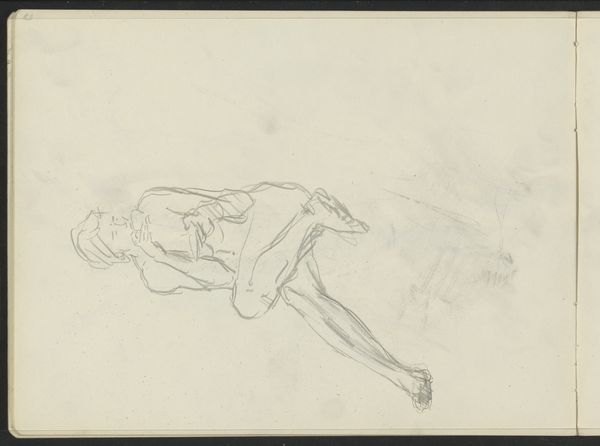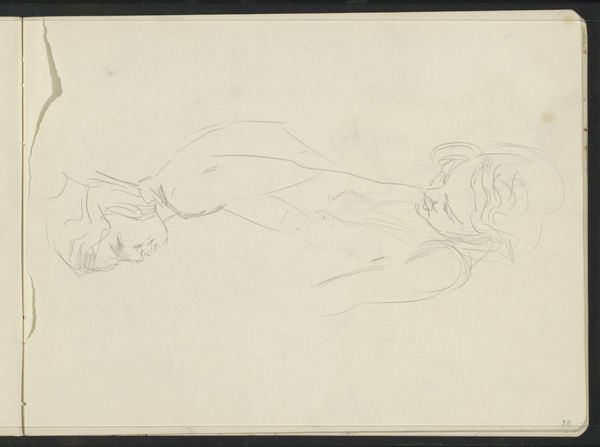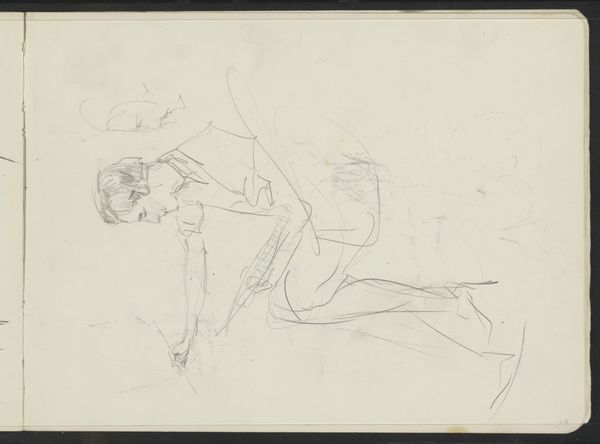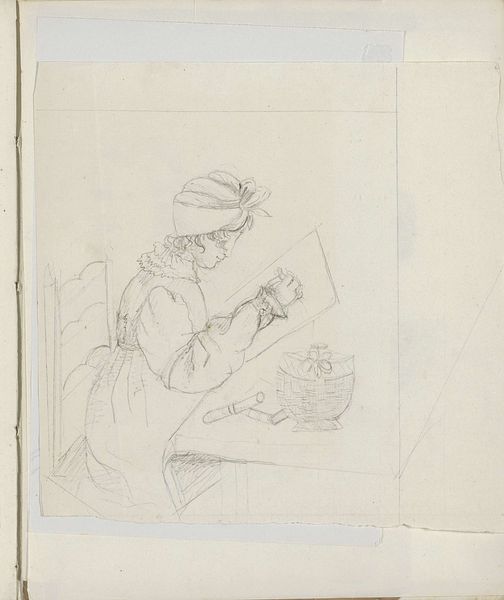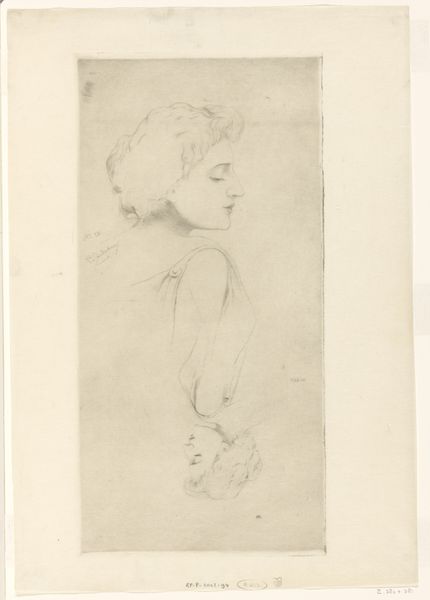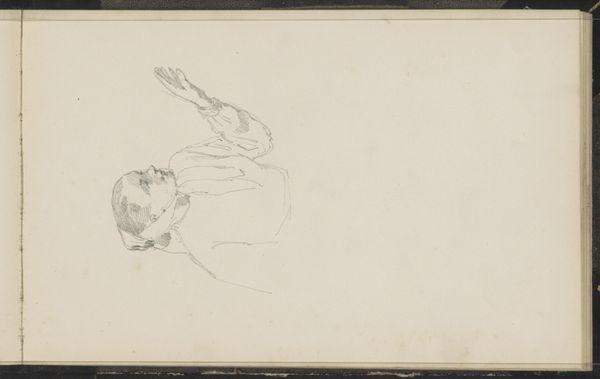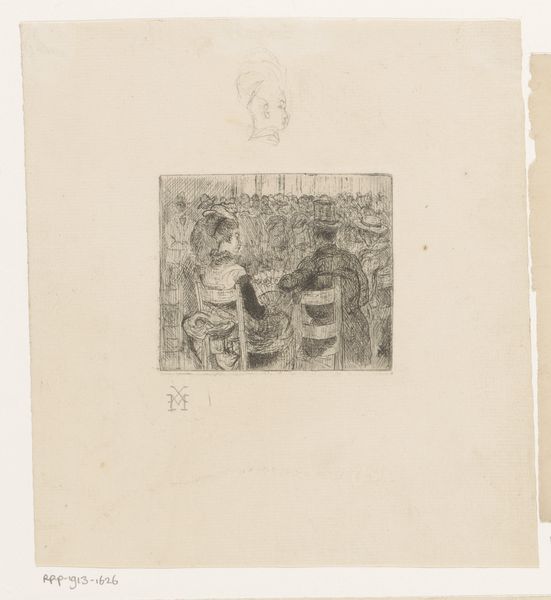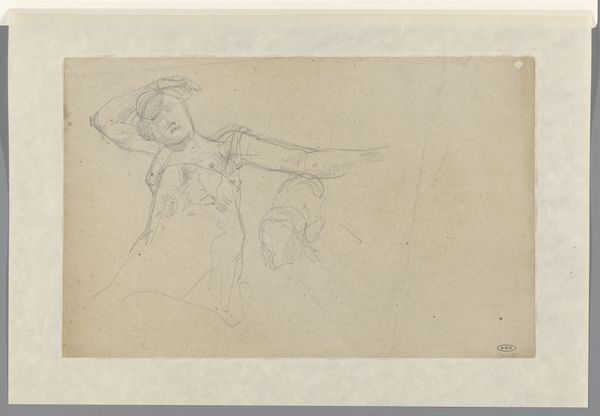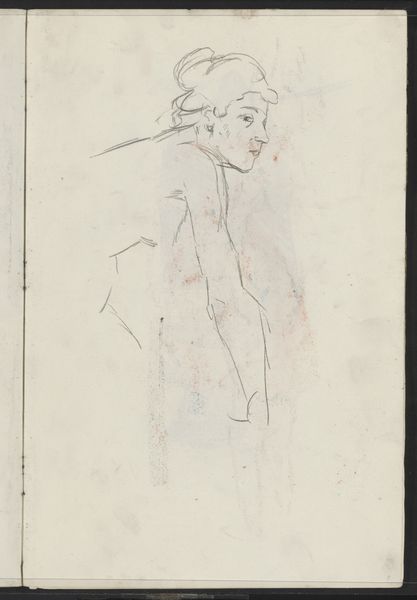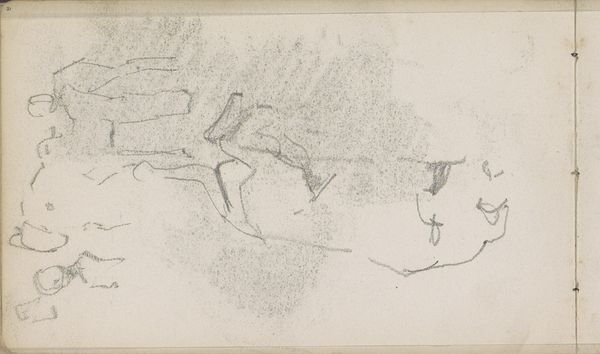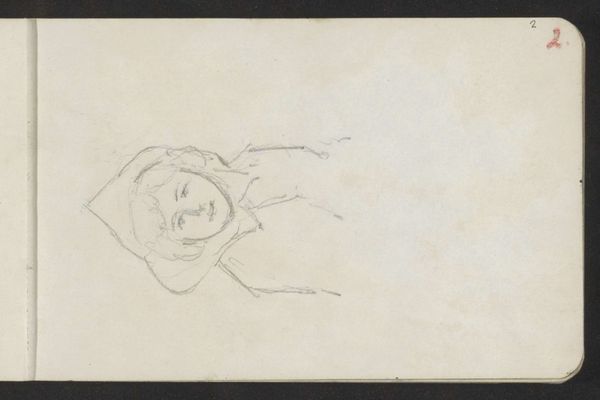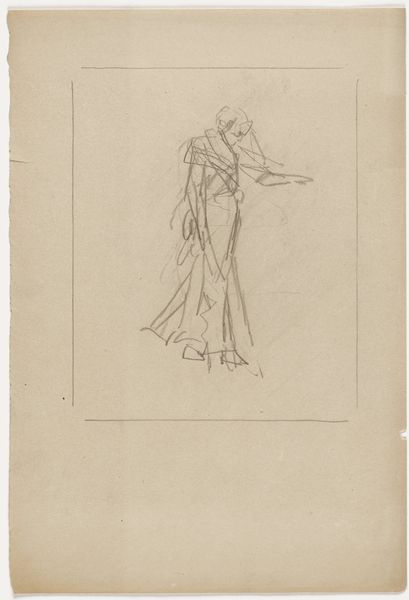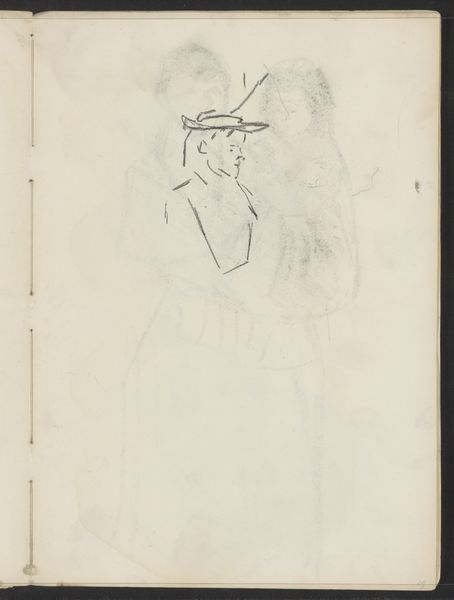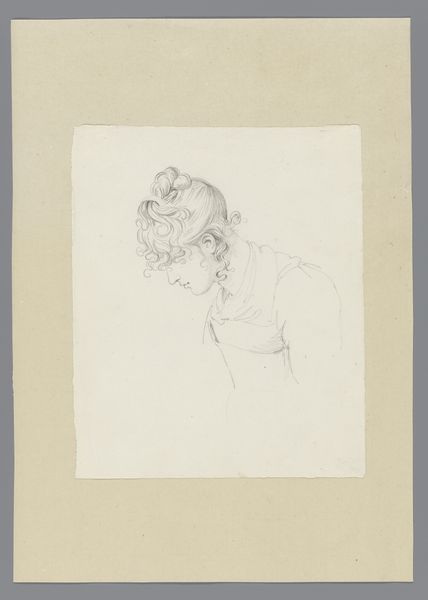
Dimensions: height 350 mm, width 267 mm
Copyright: Rijks Museum: Open Domain
Curator: Right, let’s take a moment with this delicate pencil sketch, "Zittende vrouw," or "Seated Woman," attributed to George Hendrik Breitner, dating anywhere between 1867 and 1923. What are your immediate impressions? Editor: Intimacy and weariness, almost tangible. She looks utterly lost in thought. There's a beautiful vulnerability to it; the loose lines feel like a fleeting moment captured. Curator: It’s interesting you mention vulnerability. Breitner, known for his unflinching portrayals of Amsterdam street life, reveals a softer side here, wouldn’t you agree? A lot of the work surrounding this piece in this collection portrays similar styles of woman, perhaps we’re glimpsing a more private, tender aspect. Editor: Definitely. I’m immediately thinking about the ways in which women were so often either hyper-sexualized or completely de-sexualized in art throughout the late 19th century. I think that the quiet pensiveness Breitner captures challenges this trend; the artwork demands that we simply behold the women for who she is—in this case, simply a thinking, feeling person. I also see potential class critiques when this portrait is placed next to the canon of art portraying bourgeois women; rather than expensive garments or an idealized figure, we see only a working woman resting with no effort placed into presentation. Curator: Precisely! It's far removed from grand historical narratives or posed portraits of the wealthy. It’s just a woman, caught in a moment of reverie, expressed with incredible economy of line. It is amazing he did not pick up painting or sculpture until much later in his life, because this drawing exemplifies his immense talent. Did you catch the Rijksmuseum on display behind the piece? The interplay of shadow and light adds to this deeply private moment. Editor: That level of visual interpretation almost places the viewer at odds; they become complicit in witnessing what could otherwise be unseen, but Breitner’s skill at employing what seems like happenstance and accident places viewers as knowing participants in witnessing a very intimate and humane portrait. There's almost a feminist reading to be made from that visual transaction: what does it mean for the artist and/or viewer to hold such privileged perspective and visual dominance? I'm struck by that duality—the immediacy of the sketch versus the loaded power dynamics at play. Curator: Food for thought, absolutely! It also reminds me that true artistry lies often not in bombastic statements but in capturing quiet truths. This pencil work, I feel, epitomizes the power of subtle observation. Editor: Agreed, it definitely makes one consider the myriad ways that women are perceived and visually considered in art throughout time. The portrait acts as an interrogation. It’s hard to see it any other way once your mind's been activated!
Comments
No comments
Be the first to comment and join the conversation on the ultimate creative platform.
